Study on Rauvolfia tetraphylla
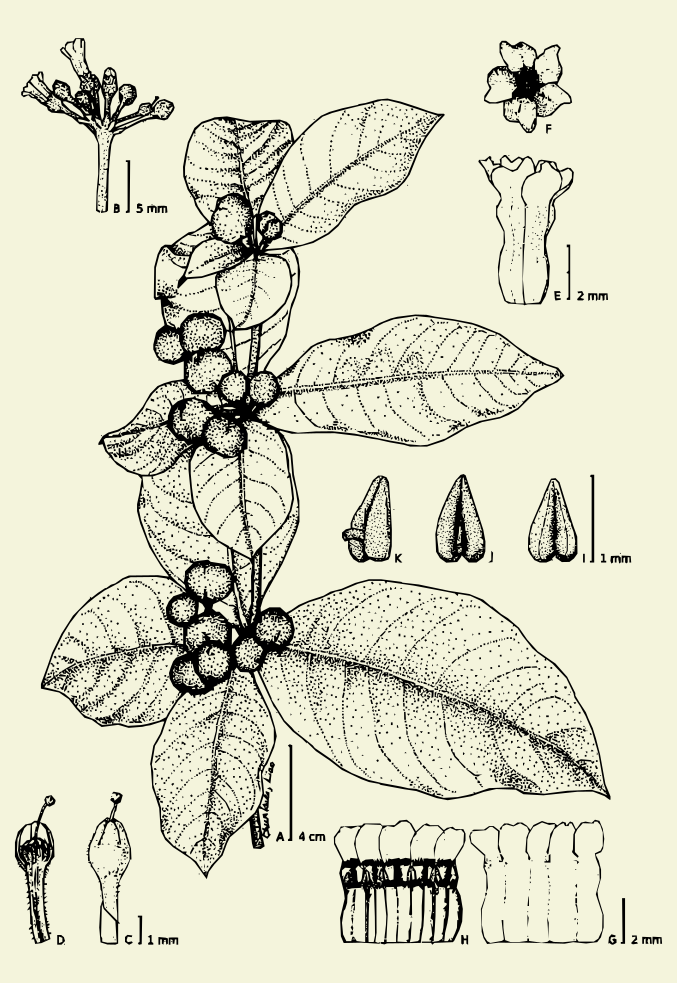
This post gives a general overview of the work I've done on the plant Rauvolfia tetraphylla. Basically the premise of this experiment was to determinate best Auxin(IAA, IBA, NAA) concentration for maximum vegetative growth and secondary metabolite production in Rauvolfia tetraphylla.
Title of Thesis: Studies on the Effect of Auxins on Stem Cuttings and Bioactive Components in Rauvolfia tetraphylla L.
Thesis Lab Name: Plant Ecology Laboratory - Department of Botany, University of Chittagong
Thesis Supervisor: Mohammed Sala Uddin, Professor - Department of Botany, University of Chittagong
# Why This Plant
Rauvolfia tetraphylla is an excellent medicinal plant and is readily available in Chittagong, Bangladesh. It also shows vigorous growth during monsoon season, which was our starting season for thesis work so it was already a huge advantage. I initially intended to use Abroma augustum, however, after the previous failed attempt to replicate it from cuttings, I was skeptical of taking further risks. Also, some of the medicinal properties of this plant includes, acting as a vasodilator, basically acting as an antihypertensive drug due to secondary metabolite reserpine, accumulation of vincristine and reserpine has also been reported after salinity stress induction, and vincristine as we know is a huge anticancer agent. Also, Rauvolfia tetraphylla has also shown successful scavenging against harmful radicals in cells, etc. and etc.
# Why Vegetative Propagation?
So, Rauvolfia tetraphylla produces seeds too however, the rate of success of propagation through seed is quite low. One of the main reasons for poor seed germination is because of the seeds being fleshy, even after maturation, the inside of the seeds still remain semi-liquidish which makes it more susceptible to microbial attacks. Plus, the seeds also need a specific season for growth and development, which could potentially take a very long time depending on the time of plantation. Seed sterility can also be seen due to selfing in Rauvolfia tetraphylla which results in inbreeding depression. So, for a more efficient method of propagation, vegetative propagation is definitely the better choice here.
# Aim of this Study
- Assessment of vegetative growth under different treatments of Auxins at 30, 60 and 90 DAP.
- Assessment of foliar pigments - Chlorophyll-a, Chlorophyll-b and Carotenoids.
- Assessment of Qualitative test for secondary metabolites at 30, 60 & 90 DAP.
- Determination of Polyphenol content
# Objective of this Study
- Development of an economical and effective propagation method for the conservation as well as mass cultivation of the plant
- Observing and determining the growth pattern for the maximum overall growth under specific concentrations of Auxin hormone.
# Overview of Experimental Steps
- Plant selection
A healthy, disease free Rauvolfia tetraphylla mother plant was selected from the medicinal garden of University of Chittagong.
- Experimental Site
The location of the experiment was selected to be the Botanical garden of University of Chittagong as it had a suitable climatic condition for the proper growth of Rauvolfia tetraphylla
- Rooting Media
Sandy soil was used as rooting media and a total of 72 polybags were filled with it
- Experimental Design
CRD (Complete Randomized Design) method was used during the whole experiment
- Preparing Treatment Solution
Different Concentrations of IAA, IBA and NAA were made. A total of 22 treatments were used with their concentration ranging from 250 ppm, 500 ppm, 750 ppm, 1000 ppm, 1250 ppm, 1500 ppm and 1750 ppm for each concentration.
- Preparation of Stem Cuttings
Healthy and disease free stems were selected and made sure that they at least had 2-3 nodes on each cuttings. The cuttings were approximately 10-12 cm in length each.
- Method of Treating the Cuttings
The cuttings were treated using quick dip method. The basal end of the cuttings were dipped in the treatment for 10 seconds and then planted in the rooting medium.
- Observation and Data Analysis
At 30, 60 & 90 DAP vegetative and foliar data were observed and recorded in different parameters
Note: Graphical data was compiled using Python's Matplotlib Library
# Observations at 30 DAP
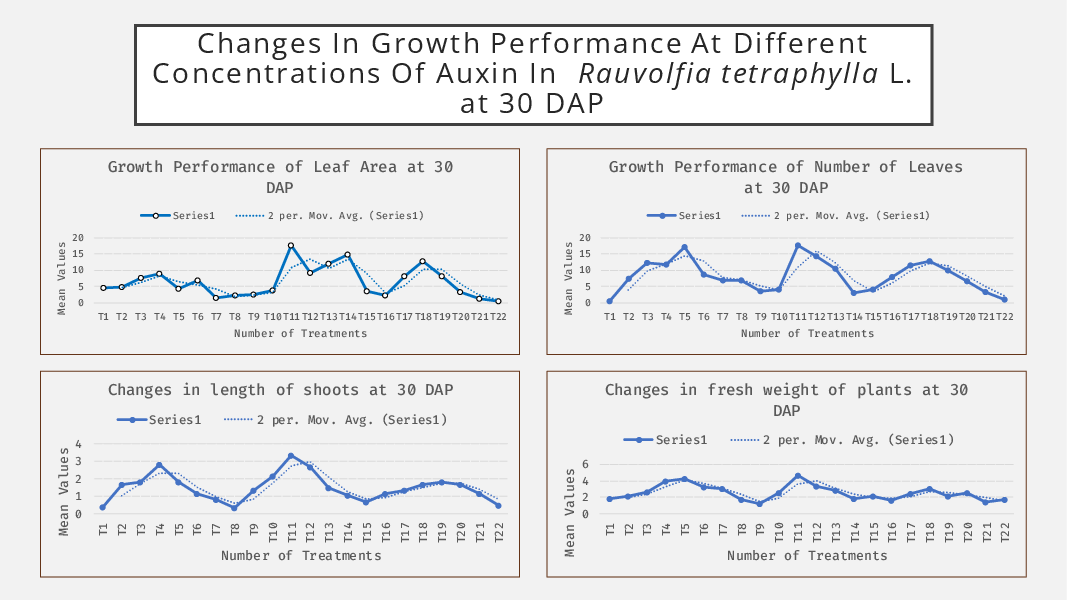
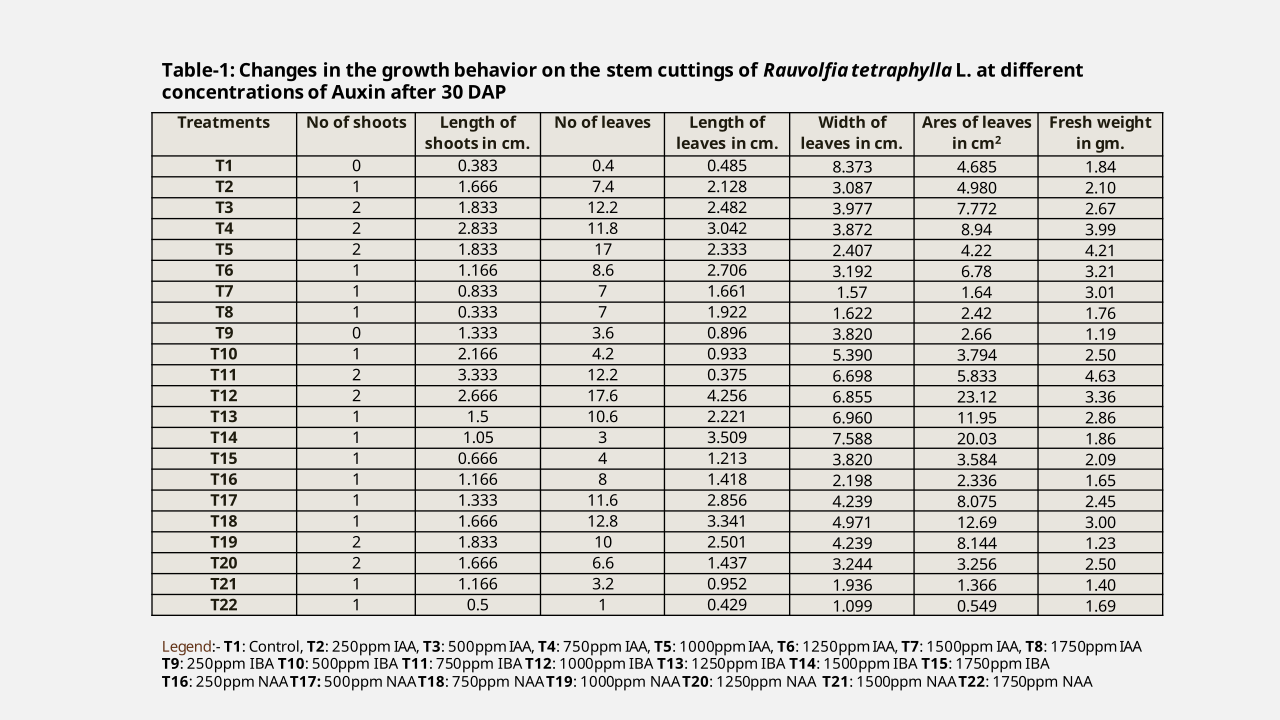
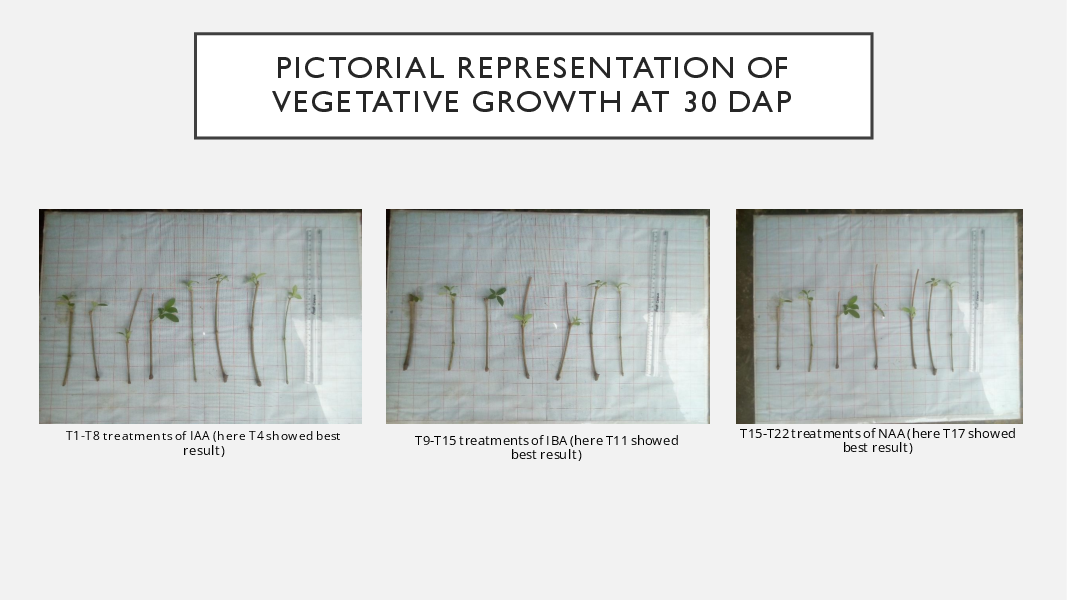
# Observation at 60 DAP
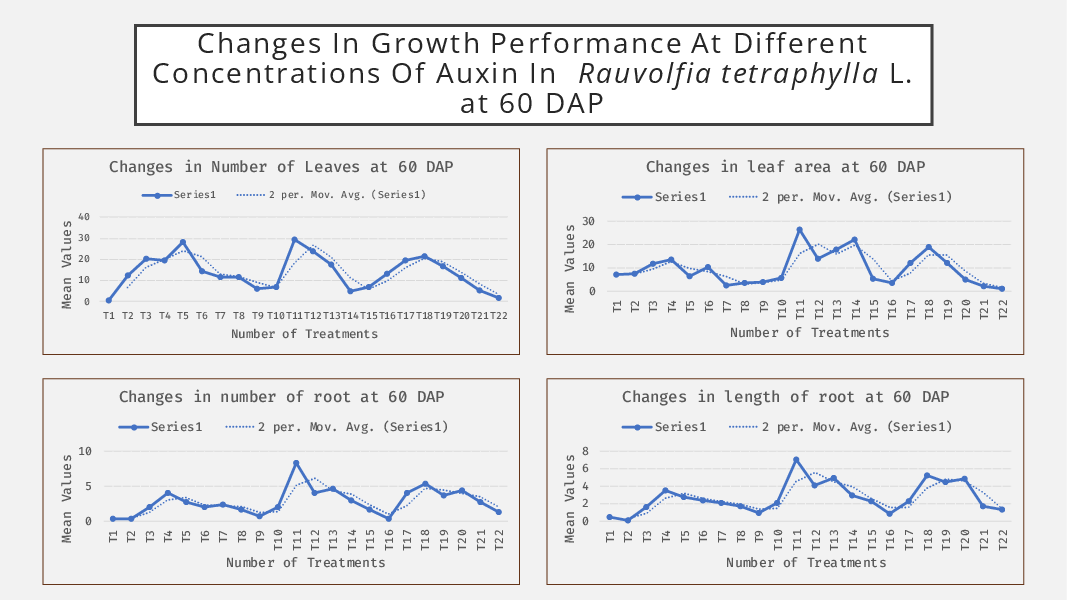
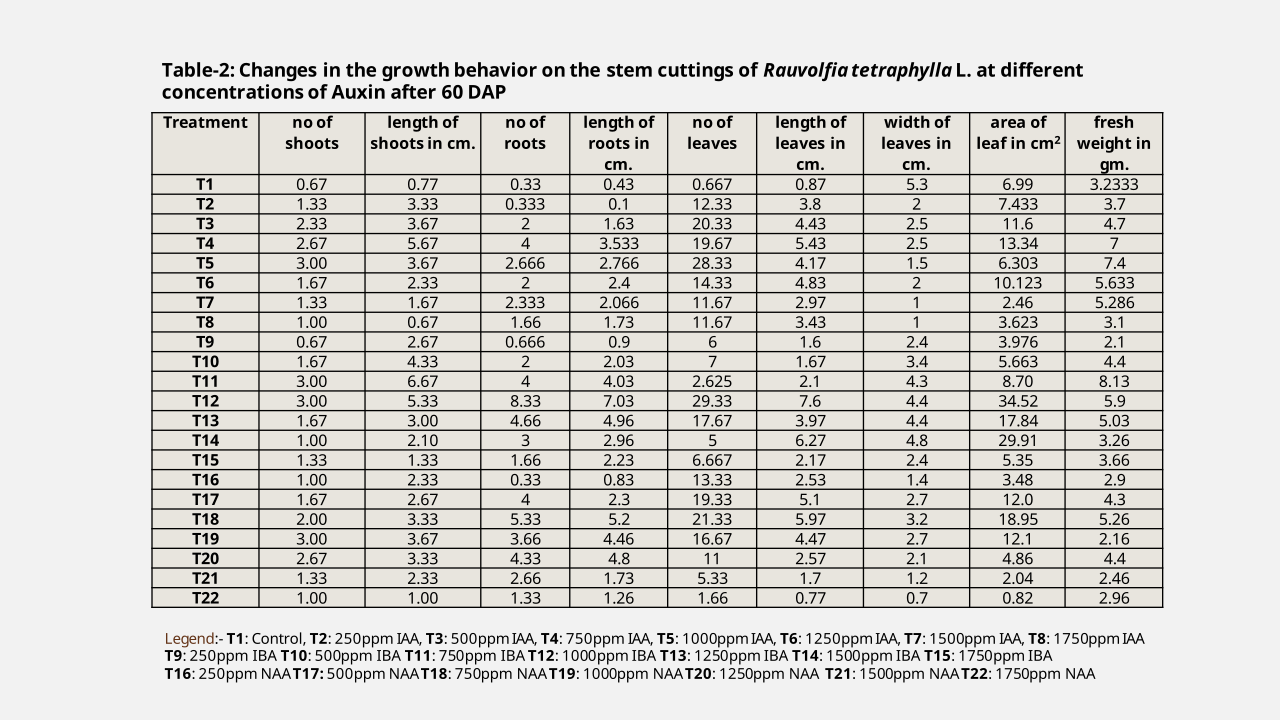
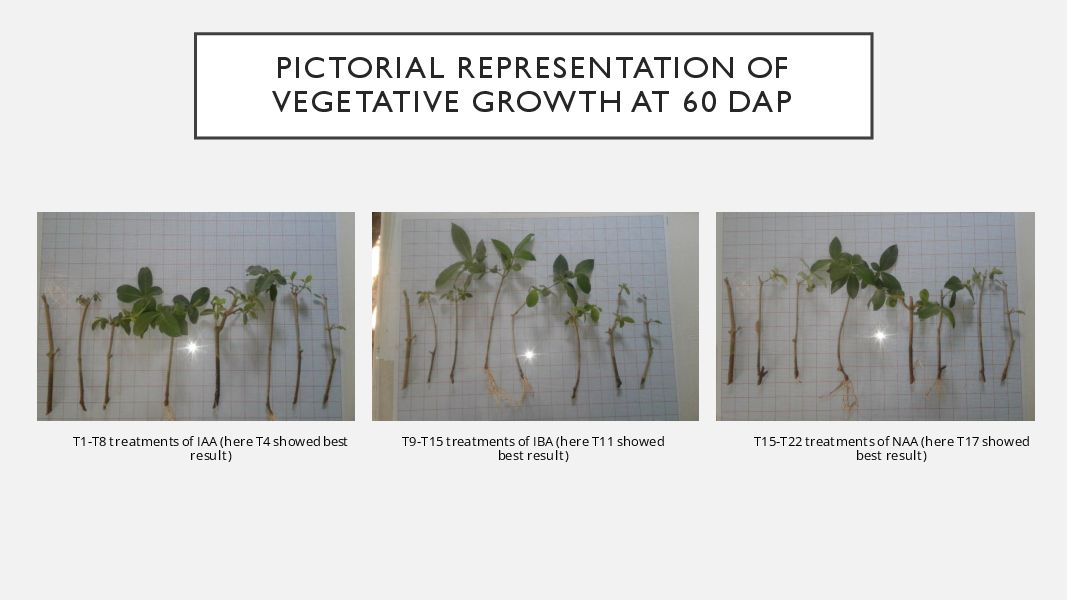
# Observation at 90 DAP
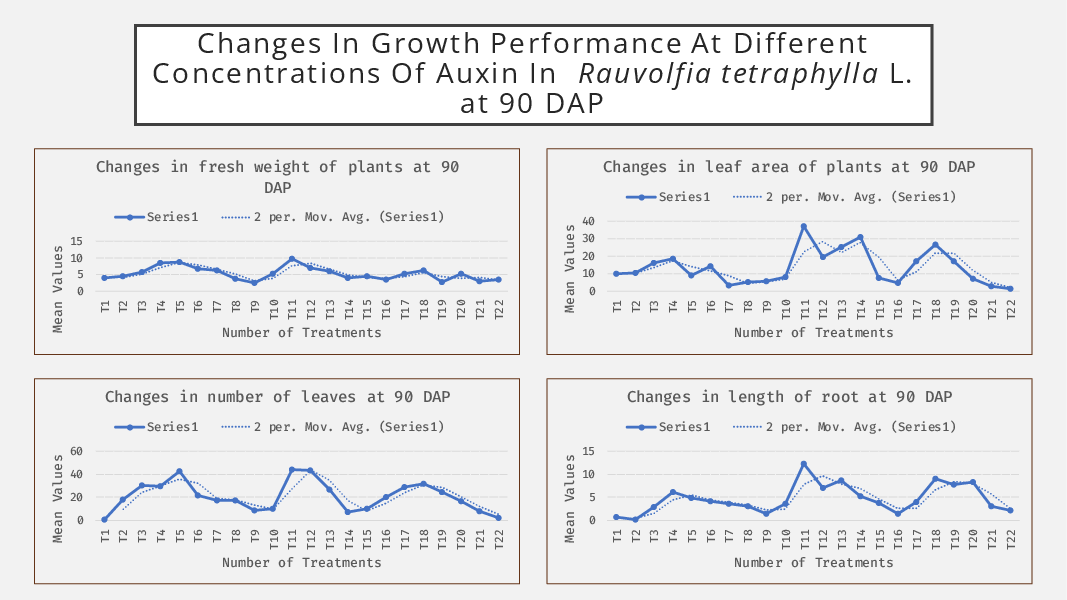
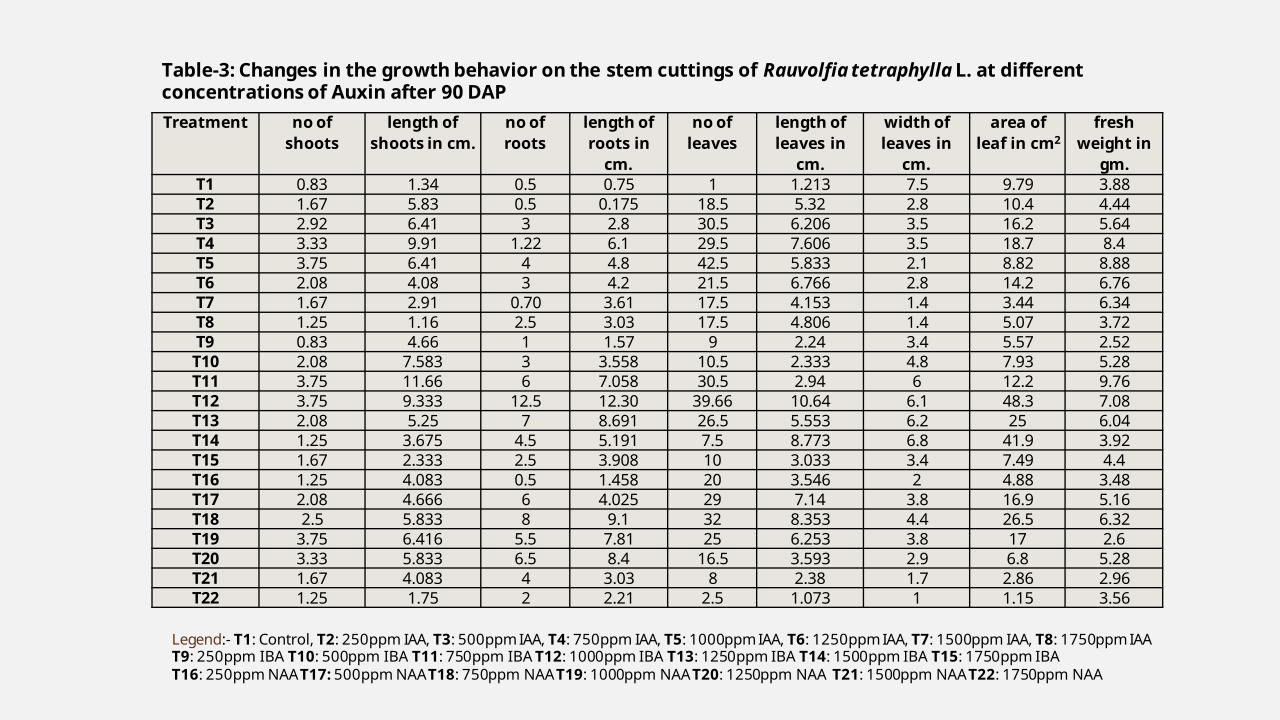
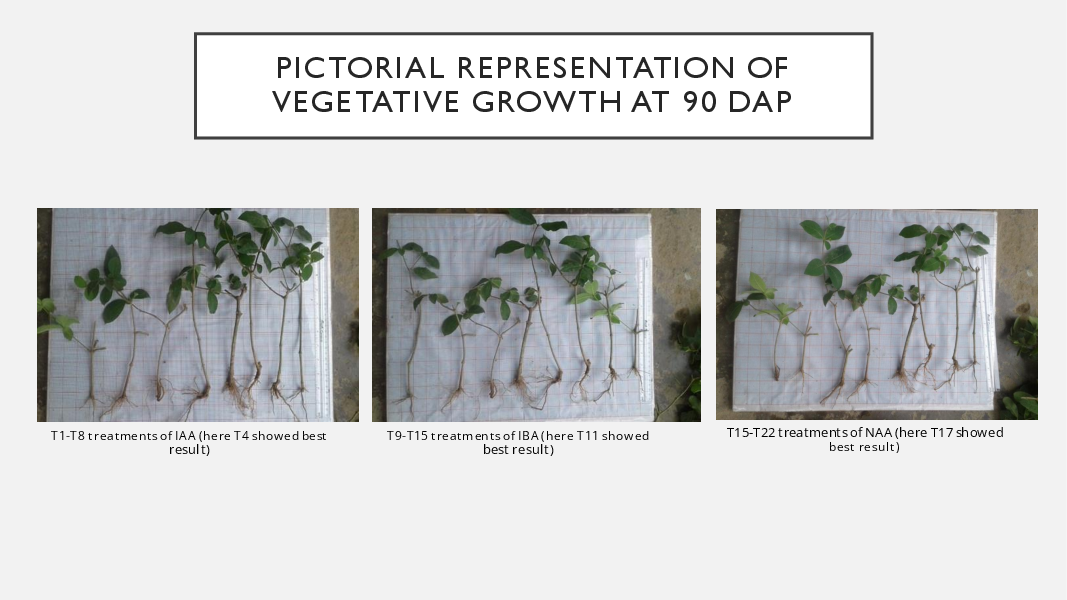
# Comparative Analysis
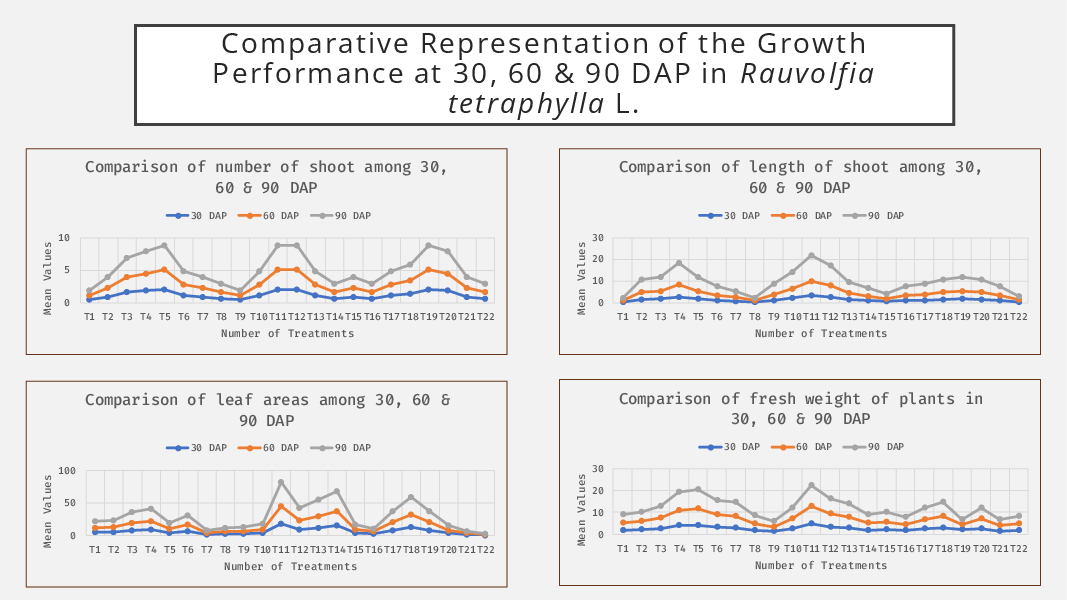
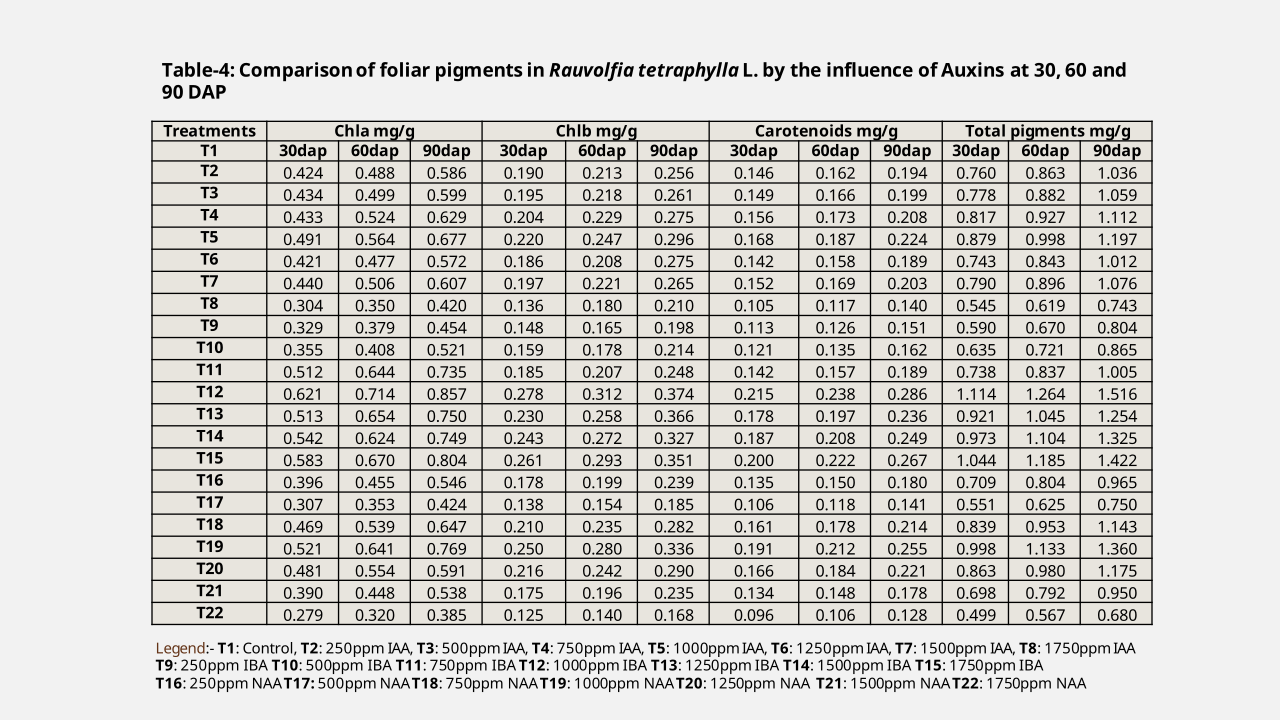
# Polyphenol Content in Leaves
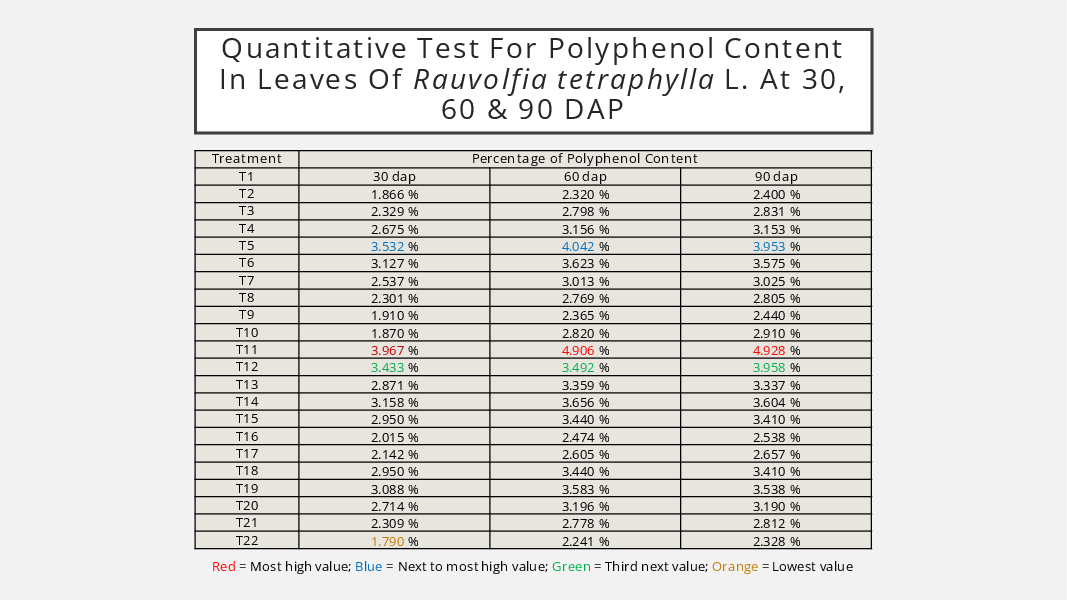
# Conclusion/Results
- Maximum number of shoots (3.75) in T11 (IBA at 750 ppm)
- Length of Shoots (11.67 cm) in T11 (IBA at 750 ppm)
- Length of roots (12.308 cm) in T11 (IBA at 750 ppm)
- Maximum fresh weight (8.8 gm) in T5 (IAA at 1000ppm)
- Maximum leaf area (37.028 cm2) in T11 (IBA at 750 ppm)
- Maximum foliar pigments were observed in T11 (IBA at 750 ppm)
- Qualitative phytochemical screening showed positive results
- In quantitative test for polyphenol, highest value was found to be 4.928% in T11 (IBA at 750 ppm)
# Comment
Hence, the aforementioned concentrations could be considered the most suitable for producing maximum biomass, and the qualitative presence of high number of secondary metabolites indicates the high medicinal value and the presence of quantitative polyphenol shows high anti-oxidant activity in Rauvolfia tetraphylla L.
The ideal concentration for the maximum growth in Rauvolfia tetraphylla L. would be IBA at 750 ppm.
Made with <3 by samiuljoy